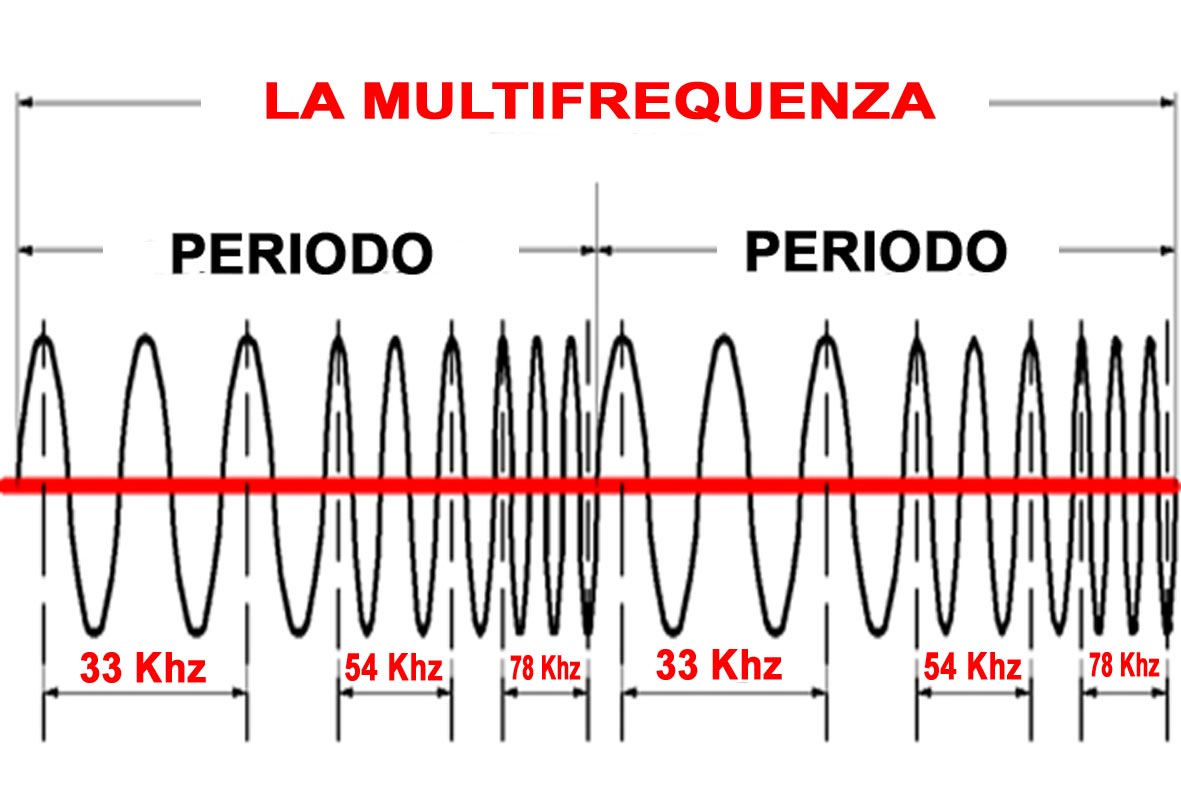Multiplexer: generation of different frequencies waves

For the aim of cleaning, the ideal ultrasonic frequency to use for determined purposes differs widely and it is therefore more convenient to simultaneously emit different wave trains in order to cover several important needs for the optimum result.
Therefore we have listed a series of conditions that require particular attention regarding the frequency to be adopted.
In light of these requirements, manufacturers of ultrasonic cleaning systems have researched specific generators which are capable of generating variable ultrasonic wave trains per unit of time.
At the bottom of this page are the descriptions of several techniques used for this purpose.
Particulate sizes
In light of the laboratory tests carried out over many years, and as reported in all the specialist literature, it is now established that the dimension of the dirt particles play a significant role in determining the frequency of the ultrasound wave most suitable for their removal:
high frequencies perform better on fine particulates
medium-low frequencies break down large particulates more quickly
Erosion
The wavelength (namely, the inverse of the frequency) determines the lesser or greater intensity in cavitation. If the nodes remain fixed at the same point over time, they erode the material to be cleaned, but even more the tank itself, then it follows that:
Continual variation of the operating frequency is invaluable as it shifts the nodes across the entire volume of the tank, eliminating them; the whirl created also achieves a uniform surface cleaning the surfaces of the parts to be treated.
Stationary waves
When energy is introduced into a liquid, it must be taken into account that this, through inertia and reaction, tends to support movement and therefore to cushion the energy of impact, i.e.: stationary (spurious) waves are generated that subtract a considerable part of the initial energy.
To prevent their formation, the wave of energy introduced must not have a constant frequency. Instead, the frequency must vary widely, even if only for the shortest periods of time.
Therefore we will describe two techniques used in order to have different frequencies:
Variation (brushing or frequency sweeping)”cycle by cycle”

Simultaneous generation of different wave frequencies (multiplexer)
Along with the carrier, waves of different frequencies are introduced, in a period which can be adjusted using the parameter software. Of course, the choice of frequencies is not random, but rather depends on the characteristics of the piezoelectric elements which, in addition to the resonance frequency, can operate at the higher harmonic frequencies, though with a lower power output.

For the aforementioned reasons, in recent years, the multifrequency generators have appeared: they work thanks to the recently developed high-speed 32-bit logic, passing from one frequency to another in infinitesimal times, i.e.: meaning practically simultaneously.
To summarise, multi-frequency generators have the following advantages:
- removal of particulates of any dimension
- attenuation of erosion of the tanks, the transducers and the pieces to be treated
- greater available power due to the elimination of spurious or standing waves
- immediately degasses cleaning liquid (see “degassing” below)
The MORONI MOG generators have the dual ability of multi-frequency operation using the sweep technique or in multiplexer mode.

